 | ||
Similar Bread, Pebete, Viennoiserie, Boule, Pain au chocolat | ||
Vienna bread pain viennois buns bruno albouze the real deal
Vienna bread is a type of bread that is produced from a process developed in Vienna, Austria, in the 19th century.
Contents
- Vienna bread pain viennois buns bruno albouze the real deal
- Vienna bread
- History
- Cereal press yeast
- Hungarian high milling
- Steam baking
- References
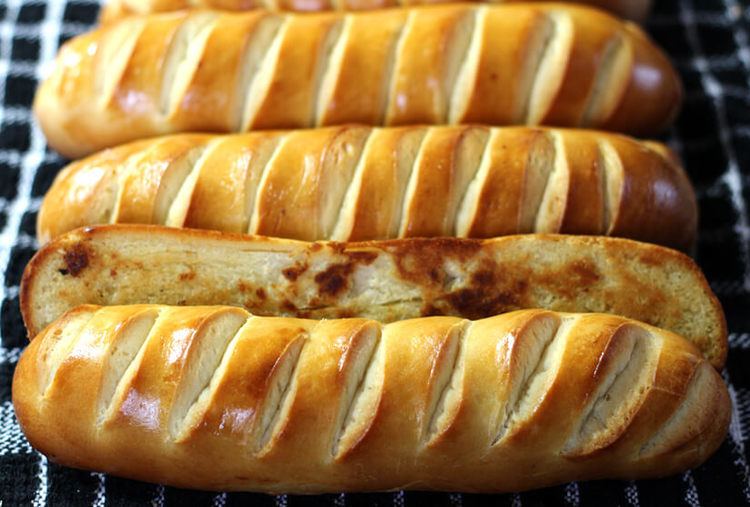
The Vienna process in part used high milling of Hungarian grain, cereal press-yeast for leavening, and care and thought in the production process.
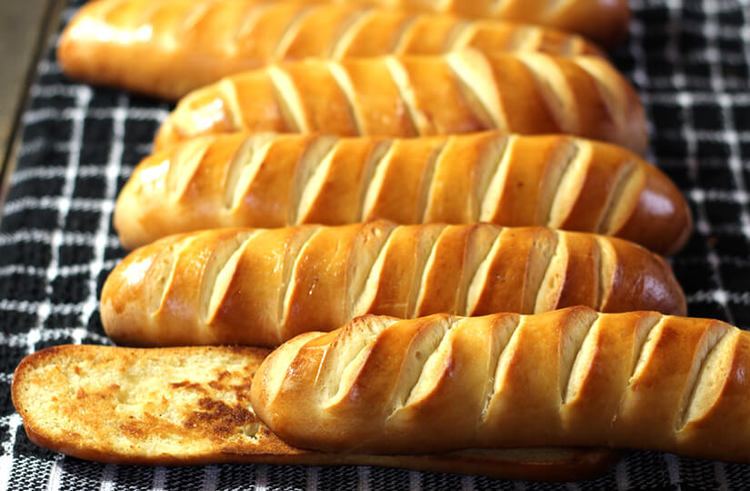
Vienna bread
History
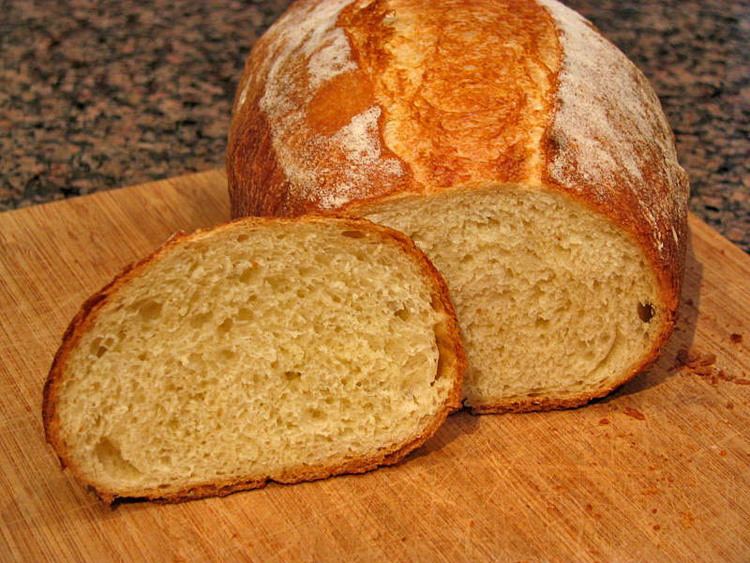
In the 19th century, for the first time, bread was made only from beer yeast and new dough (no old dough). The first noted or applauded example of this was the sweet-fermented Imperial "Kaiser-Semmel" roll of the Vienna bakery at the "Paris International Exposition of 1867". These sweet-fermented rolls lacked the acid sourness typical of lactobacillus, and were said to be popular and in high demand.

Prior to this time, bakers had been using old-dough leavens, and they had discovered that accelerating the latter refreshments' rest intervals promoted yeast growth in a race against time and what would later be learned were overwhelming lactobacillus numbers. At some point bakers began to add brewer's or beer yeast or barm to the latter refreshments, and liked the results.
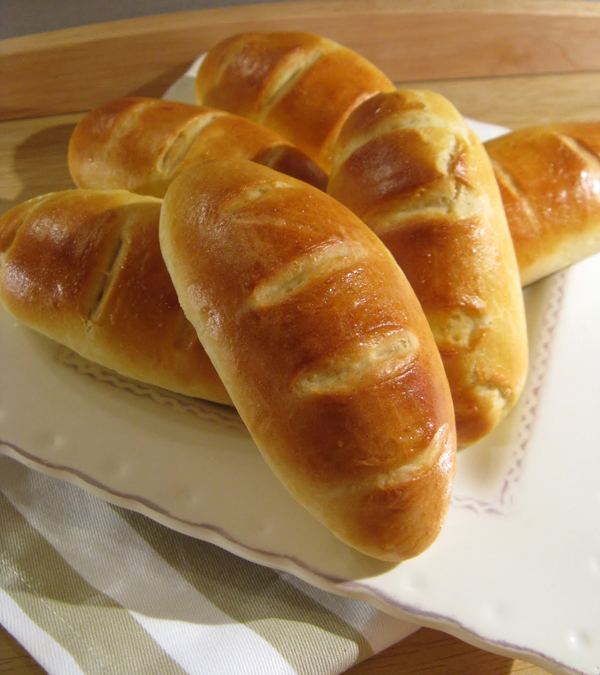
A shortage of beer yeast for making sweet-fermented breads developed when beer brewers slowly switched from top-fermenting to bottom-fermenting yeast (both S. cerevisiae), so the Vienna Process was developed by 1846. In 1845 the Association of Vienna Bakers announced a contest for the production of a sweet-fermenting yeast, this prize was awarded in 1850 to Adolf Ignaz Mautner of Markhof. In 1867 the Paris Exposition was said to recognize the Vienna Bakery as, "First in the world."
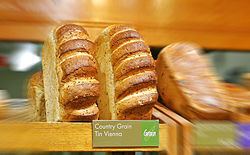
The Vienna bakery of the exposition year made three kinds of bread: the sweet-fermented Imperial rolls; wheat and rye as well as rye-only loaves; and a large variety of fancy breads and sweet cakes. The Imperial rolls were made with the finer grades of flour, milk and water in a 50:50 ratio, beer yeast, and salt. Other breads made with the same grades of flour claimed to include: Teacakes, which added butter and may have excluded water in favor of milk; Gipfel or Pinnacle cake, which used milk (no water) and lard; and Brioche, made with milk and sugar.
Cereal press yeast
Vienna yeast was propagated utilizing a mash of malted corn, barley, and rye. Horsford did not assert hops were used in the production of press yeast. After pitching a small amount of yeast into the cooled wort, and introducing some air, the propagated yeast floated to the surface. This yeast was collected with some care by skimming. Cool, distilled water was used to wash and settle the yeast a sufficient number of times until only the yeast remained. It was then drained and compressed with the aid of a hydraulic press.
Press-yeast was one forerunner to the modern, commercially available Baker's yeast.
Hungarian high milling
Hungarian high milling used a hard or tenacious variety of Hungarian wheat. Their mills were outfitted with both stone and steel-roller mills, and were using a new process that was undoubtedly at the forefront of the technology of the day. This time period marked a changeover from one-pass stone grinding or low milling with its higher damaged starch content, to that of roller milling with greater speed, efficiency, and cooler-temperature operation.
Eben Norton Horsford wrote,
Horsford observed that high-milled flour contained less damaged starch,
The origins of high milling appeared to be Austria. Horsford attributed the phrase high milling to Vienna grits or Grieß, and which were claimed to be on sale in Berlin as early as 1810. The recognized pioneer was a miller named Ignaz Paur (1778–1842) who by 1810 had moved to Leobersdorf. The demand for these grits was so great, hand sifting them was inadequate, so Paur employed the services of a cabinet maker named Winter to build the first middlings purifier. Paur milled already-separated grits a second time, first making an extract flour locally known as Auszug. Over the course of several decades, these high-milling techniques spread to Hungary, Saxony, and Bohemia, among other areas. In Hungary, the steel cylinder or roller mill, locally known as the Walzenmühle, was first invented, and later improved. The Walz sets kept the grain cooler over multiple passes, as successive pairs of rollers were adjusted to incrementally smaller spacings, the grain moved through cooling air from one pair to the next, each cracked them pass-by-pass into smaller successive bits, instead of crushed between stones in one heat-generating pass.
At the Pesth Walzenmühle, when wheat had been fully transformed to flour, it had passed through 18-to-24 pairs of rollers. This new cold milling process, particularly well suited for hard wheat, likely resulted in lighter, more airy breads of greater baked volumes.
Steam baking
The Vienna bread-production process innovations are often credited for baking with steam leading to different crust characteristics; however Horsford, in his 1875 Report on Vienna Bread, wrote:
The dough is placed into the oven under a ceiling of steam or, alternatively, the oven is injected with steam as soon as the loaf is loaded. This adds moisture to the body of the bread which delays establishment of the crust and tends to prevent cracking, resulting in a more evenly risen and thinner crust as well as a light and airy crumb. When the steam is gone (sometimes today, withdrawn), the dry heat of the oven bakes the crust, producing its characteristically slightly crisp and flaky texture. Vienna bread is typically formed as an oblong loaf, but can be baked in other shapes. As a longer loaf, it may well have been the origin of French bread as bakers there attempted to adopt the steam method to produce their baguettes.
